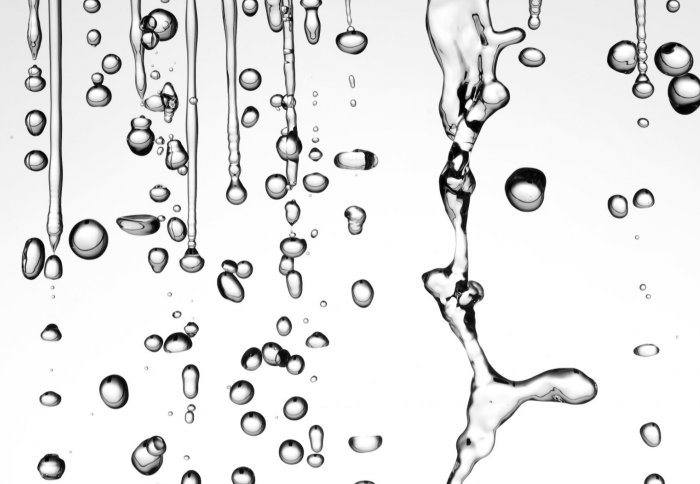

Imperial scientists have developed a new technique for carrying out multiple-step chemical reactions to improve production of advanced materials.
The technique allows chemists to do multiple-step reactions inside tiny droplets in a flowing stream – a process known as droplet chemistry – and should make it possible to carry out more sophisticated chemical reactions than have previously been possible. The method will make it easier to create high-quality, high-performance advanced materials for new plastic electronics such as flexible computer screens and affordable solar panels. The Imperial researchers describe their new ‘three-phase multistep droplet reactor’ in a paper in the journal Nature Communications.
This three-phase droplet chemistry provides an incredibly controlled, straightforward and low cost method for carrying out the multistep chemical procedures needed to create robust and high-quality advanced materials.
– James Bannock
Study author
Droplet chemistry is a form of “flow chemistry” where reactive chemicals combine, mix, and react inside networks of narrow pipes or channels to create new materials. In conventional forms of flow chemistry the reaction solution moves through the pipes as a continuous stream, and over time residue may deposit on the channel walls, causing fouling.
In droplet chemistry, the reaction solution flows as discrete droplets inside a second liquid that it cannot mix with. This prevents channel-fouling as the droplets are kept away from the walls of the reactor by the other liquid. The small size of the droplets also improves the uniformity of the reaction, leading to a better quality product.
One of the lead researchers, Adrian Nightingale, then a postdoctoral researcher in the Department of Chemistry, said: “When arteries become blocked the whole circulatory system can quickly fail, with fatal consequences. Similarly, when the tubes we use in flow chemistry become blocked, flow reactors fail and production stops. Droplet-based chemistry eradicates this problem, but previously it could only be used for very simple, single-step reactions where all reagents were present in the droplets from the outset. Here we have developed a method for controllably injecting new reagents into the flowing droplets, greatly expanding the palette of materials that can be produced.”
In the new research, the scientists have introduced a third phase, a gas, alongside the two liquids to establish an even spacing between the droplets and so ensure that each one receives the same dose of the added reagent.
John de Mello, who heads up the research team, likened the challenge to throwing small parcels into the open windows of passing cars. “If the cars are all moving at the same speed and are exactly the same distance apart, you can time things well and achieve a perfect success rate. That’s what the gas is needed for – to maintain a uniform separation between droplets.”
James Bannock from Imperial’s Doctoral Training Centre In Plastic Electronics commented: “This three-phase droplet chemistry provides an incredibly controlled, straightforward and low cost method for carrying out the multistep chemical procedures needed to create robust and high-quality advanced materials.”
Tom Phillips, also a co-author of the work, added: “This step forward is very exciting for industry as the method should scale well to higher production volumes, allowing high-specification advanced materials to be made in the quantities that industry needs.”
The scientists compared the performance of the three-phase reactor to conventional droplet reactors by using a simple visual test. They added a continuous stream of red dye to a droplet stream of blue dye, and then they recorded images of the droplets before and after the red dye was added. Without the gas, there were irregularities in the spacing between the droplets after dye was added and significant variations in their size and colouration due to inconsistent dosing. With the gas present, all droplets were uniformly spaced and had the same purple colour after dye was added, indicating that each droplet had received the exact same dose of dye.
The scientists used their new three-phase chemical reactor to create quantum dots, which are nanocrystals made of semiconductors most commonly used in solar cells and medical imaging. They believe the technique will be readily applicable to a broad range of fine chemicals and advanced materials.
REFERENCE:
Nightingale, A.M. et al. ‘Controlled multistep synthesis in a three-phase droplet reactor’. Nature Communications. 6 May 2014.
Article text (excluding photos or graphics) © Imperial College London.
Photos and graphics subject to third party copyright used with permission or © Imperial College London.
Reporter
Gail Wilson
Communications and Public Affairs

Contact details
Email: press.office@imperial.ac.uk
Show all stories by this author




Leave a comment
Your comment may be published, displaying your name as you provide it, unless you request otherwise. Your contact details will never be published.